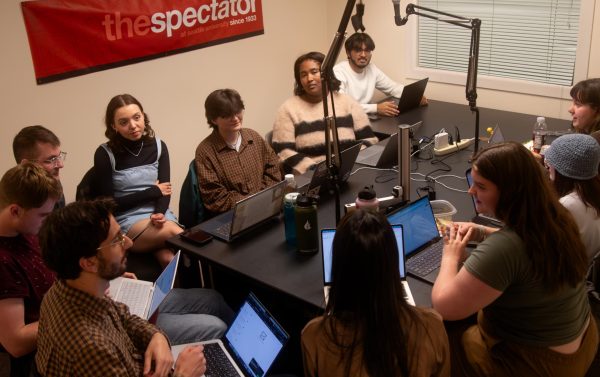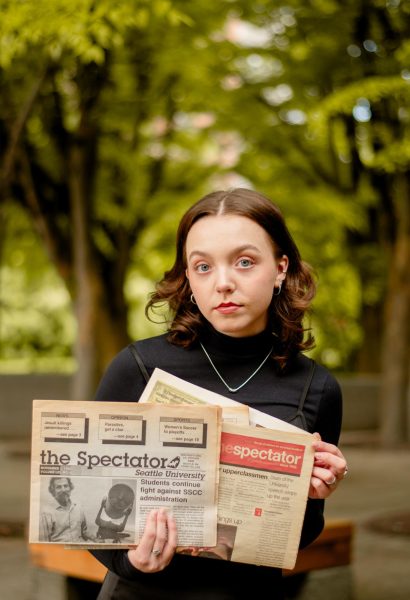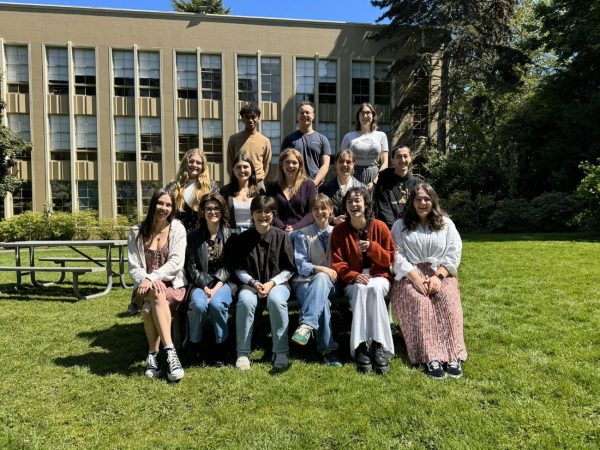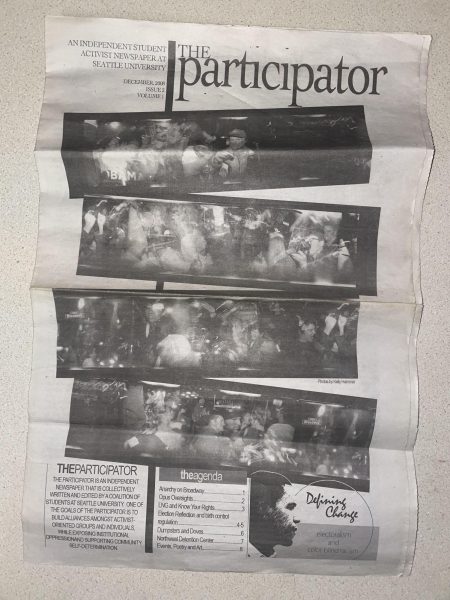Seattle U Graduate Students Are Building a Droid That Collects Trash

If a Seattle University student were to stroll into the Sinegal Center’s Billodue Makerspace March 3, they would come across an artificial intelligence robot capable of picking up trash. The device, which is one in a line of prototypes, represents a vision of a community funded cleanliness initiative.
Altanai Bisht initially invented the robot, called “RamuDroid” that is now being developed by her and two other Seattle U students also pursuing master’s degrees in computer science. The students, Bisht, Arielle Wilson and Zachary Jeffreys, are working toward a future in which communities can invest in robots that pick up trash and hazardous waste, in the process yielding Bitcoin from the service they are providing to their neighbors.
“There have been some iterations before this, but none as advanced as this one. This one contains the cumulative intelligence we have gathered from our master’s program, with the good intention of cleaning hazardous waste. We are working on bettering the model that we have,” Bisht said. “The current model has been designed to pick up plastic garbage leaves, paper cups and things like that.”
The team offered a demonstration of the software and the robot’s capacity to pick up trash. Other students working in the makerspace stopped what they were doing to watch as the AI recognized the debris, oriented toward it and picked the item up. The product has the potential to address a pressing problem in urban spaces—trash and hazardous materials making communities less safe.
This is a particularly pressing problem in the Emerald City. In February 2021, Seattle sanitation workers collected one million pounds of trash from parks and community areas. In addition to posing aesthetic and property value concerns, trash is a health hazard. In a 2019 lawsuit filed by King County against Purdue Pharma, the county argued that the opioid epidemic has led to a needle problem in the city, including the accumulation of drug paraphernalia in public areas.
Because the RamuDroid is capable of machine learning, the bot has the potential to learn how to identify specific hazards and handle them without the need for direct human assistance.
“We could train it to handle hazardous waste and biochemical waste,” Bisht said.
The team is passionate about their work, and excited about the way that it integrates developing blockchain technology into the functions of the robot. The use of the blockchain technology would allow ownership of the droids to be easily delegated based on the unique digital footprint of each robot.
“So the idea is that no one likes to pick up trash. Simple problem, right? We asked, ‘what is the coolest way to solve this problem?’ Robots, artificial intelligence and blockchain. So, being computer scientists and students, we decided ‘why not? Let’s try to fix it,” Jeffreys said.
The end-goal for this product would involve citizens purchasing a RamuDroid, and being issued equity in the product in the form of a non-fungible token, which would yield cryptocurrency for cleanup projects.
The team has broken their tasks down into specific components of the robot, and are fine-tuning their work for an upcoming competition. Jeffreys is the electronics and hardware expert, while Bisht focuses on the AI and media streaming elements of the bot. Wilson is doing additional work on top of Bisht’s product.
“I’m building on what she already created, so right now I’m working on transforming it into a light model,” Wilson said.
So far, The RamuDroid project has created a technologically sophisticated and effective product on a shoe-string budget. The team is currently working on developing an ideal power source for the RamuDroid and are in search of new funding sources to enhance the bot.
“Right now since we’re pretty much piecing together toys and Lowe’s parts, we’re running on power sources that aren’t ideal,” Jeffreys said. “Now we need to make it bigger, which means all new parts and stronger motors.”
The team is participating in the Solana Riptide Hackathon, which will include prize money that the Seattle U students will use to scale-up the project. They hope that with additional funding, later iterations of the RamuDroid will have wider trash sorting capabilities, a more sustained battery-life and a larger frame. Given the strong progress made by the team so far, the project has the potential to offer an innovative new technology developed in the heart of Seattle U’s new Sinegal Center.
As the team continues to improve the RamuDroid, students in the makerspace will be able to witness an Artificial Intelligence program learn how to complete complex tasks in a manner which could make the city cleaner and safer in the future.










